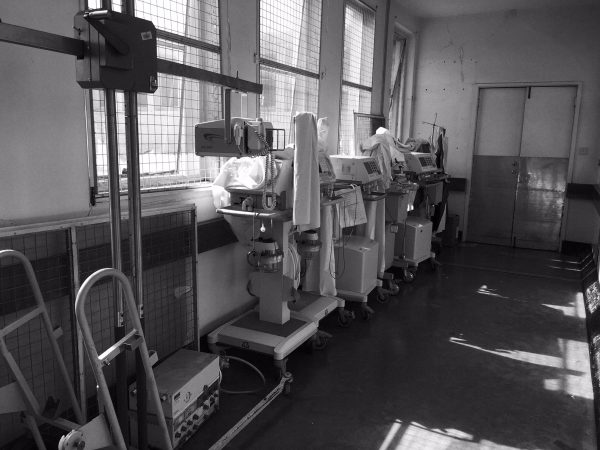Time flies – day 1 in Tanzania
It’s Friday 10th of February and for the first time this year I didn’t wake up in Bristol to a cold, dark world of dustbin men and frozen windscreens. Instead I woke up to the sound of the mosque at 5am, to dogs barking outside my window, and to unfamiliar birdsong. If thousands of miles from home is a good start for an adventure, then here I go: because today I woke up in Tanzania.
In a town named Moshi, specifically, a hub of activity at the base of Mount Kilimanjaro. I have the privilege of spending 6 months here as a senior anaesthetic trainee from the UK, based at Kilimanjaro Christian Medical centre (KCMC) – a 600 bed facility serving as the main referral hospital for all of Northern Tanzania.

This will count towards my training as an OOPT (out of programme training opportunity).
On my first day I head over to the hospital with Henriette Willigers, an anaesthetic consultant from the Netherlands who has been coming to Tanzania as a volunteer for a number of years. We leave the house at 6.30am to walk 35 minutes to the hospital. It is the golden hour after sunrise, and Kilimajaro peeps her head out above the clouds. The view is too spectacular for my iPhone to capture and I leave it in my pocket. I think I will rather enjoy my walk to work.
As a Lifebox fellow, one of my main goals during this 6 months will be to support formal teaching to the nurse anaesthetic students. This will take the form of lectures and case-based discussions Monday through Wednesday mornings, 7:15 to 8am.
Local faculty deliver the teaching, and I’ll help facilitate this, with the critical goal of providing a sustainable local education platform for nurse anaesthetists. Teaching ends with one of my favourite pastimes: a ‘1,2,3 then pasha pasha pasha!’ – three handclaps as routine for all class presenters.
I make my way to greet Dr Mwemezi Kaino in his office opposite main theatres. He is the only fully qualified anaesthetist at KCMC, and head of a busy anaesthetic department. There are currently five anaesthetists training (residents) and two non-training grades (registrars). Anaesthetic medical officers (AMOs), clinical officers and nurse anaesthetists all form part of the dedicated anaesthetic faculty here. Staff and trainees are divided appropriately to provide anaesthesia for the different surgical specialties.
I change into my scrubs, ready for my first day in theatre. The main theatre is compromised of five rooms, a pre-operative area which is work in progress, and a recovery area. Surgical specialities include: general, trauma, neurosurgery, gynaecology and orthopaedics. There are 12 theatres all together including outlying ones (ears, nose and throat, urology, the delivery suite and eyes).
One of our first cases is a small child for an elective hernia repair. Henriette supervises one of the anaesthetic trainees doing a caudal block, an anaesthetic technique performed for post-operative pain relief. The block works well and the child is comfortable in recovery. I spend the rest of the day in emergency theatre observing how things are done. By 3pm I am almost falling asleep myself. I cannot decide whether it is down to the culture shock, the 24 hour plane journey or breathing in more anaesthetic gases than I am used to.
On the way out of the hospital I buy a club soda, for 1000 Tanzanian shillings or about 30 pence. It is cool from the fridge and comes in a glass bottle with a black and white ‘Krest’ label. I may not realise it on day 1, but I shall miss this tradition very much when it is time to return to the UK. Right now that seems a very long way off.
Well we’ll see, time flies as they say.

